How to Back up Your iPhone to an External Hard Drive: 2025 Guide
There are several ways to back up your iPhone. The most common methods include backing up locally on your computer or using a cloud-based online backup service like iCloud. External hard drives are also a solid choice. We will show you how to back up iPhone to external hard drive.
Performing a backup ensures that you don’t lose the important data on your iPhone. You have several options, including cloud backup or backing up your iPhone locally on a computer. External hard drives are not as popular as they once were, but they are still a reliable option. This guide will show you how to back up your iPhone to an external hard drive.
For many, using iCloud is the most direct way to back up your iPhone’s data. We cover the process in our how to backup iPhone to iCloud guide. External hard drives are the other option, and there are still plenty of reasons to consider one.
External hard drives were once the go-to for storing data. Using one makes you the only person in control of your backup files. You can save your iPhone data to an external hard drive using a Mac or PC. Read on to see how to use one to back up your iPhone.
-
02/27/2024 Facts checked
Article rewritten to include updated devices and how-to steps.
How to Back up an iPhone to an External Hard Drive on Mac
Saving an iPhone backup to an external hard drive begins by creating a local backup on your Mac computer. Having a backup stored on your device is the most direct way to transfer the data to your external hard drive. Later, we will cover how to make an external drive the default location.
10,000+ Trust Our Free Cloud Storage Tips. Join Today!

- Demystify cloud storage terminology and key concepts in plain language
- Discover easy-to-implement techniques to securely backup and sync your data across devices
- Learn money-saving strategies to optimize your cloud storage costs and usage
- Connect iPhone to Mac
Connect a USB-C or Lightning cable to your Mac, depending on your iPhone model. The iPhone icon will appear under “locations ” in Finder.
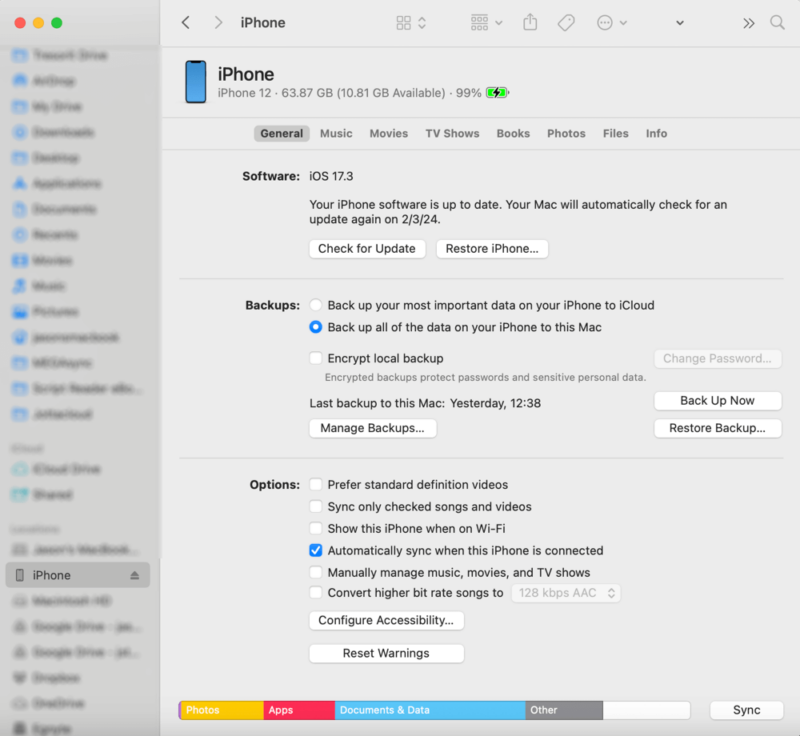
- Backup iPhone
If your iPhone does not begin the backup process, click the “back up now” button. Alternatively, you can choose to back up to your Mac or iCloud. There’s also an option to “restore backup” or encrypt your data.
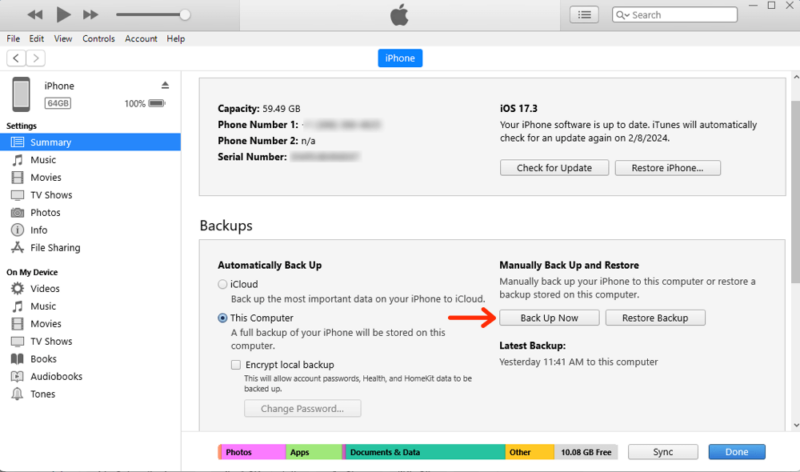
- Find iPhone Backup
The quickest way to find your iPhone backup file is to click “manage backups,” right-click on the latest backup and choose “show in Finder.” You should see a folder with numbers and letters. Alternatively, in Finder, you can select “go” from the menu bar, choose “go to folder” and type in or copy and paste “~/Library/Application Support/MobileSync/Backup/.”
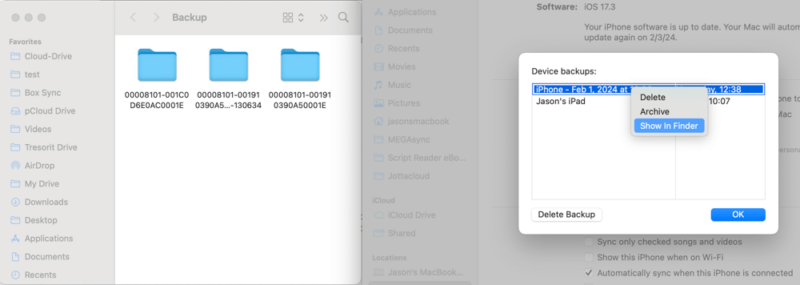
- Connect External Hard Drive
Connect your external hard drive to your Mac computer. You should see it in the same section as your iPhone. Click to open it. If you wish, create a folder called “iPhone backups.”
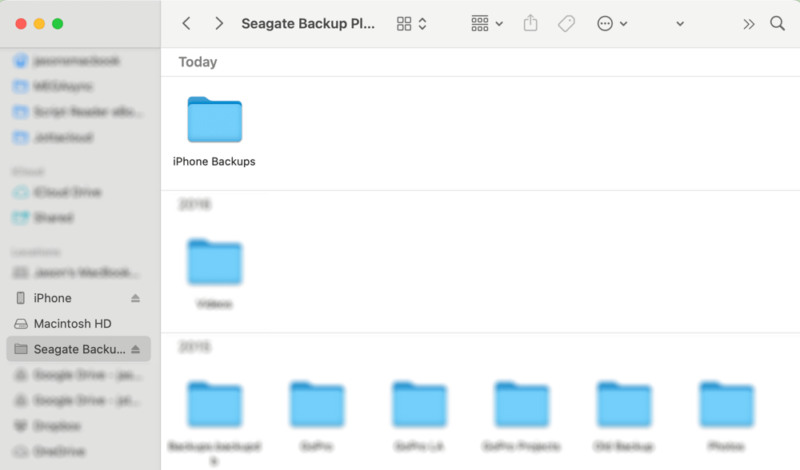
- Save iPhone Backup
From the previous Finder page with your iPhone backup, make a copy. Apple does not recommend moving this folder from its location on your Mac. Copy and paste the iPhone backup into the external drive.
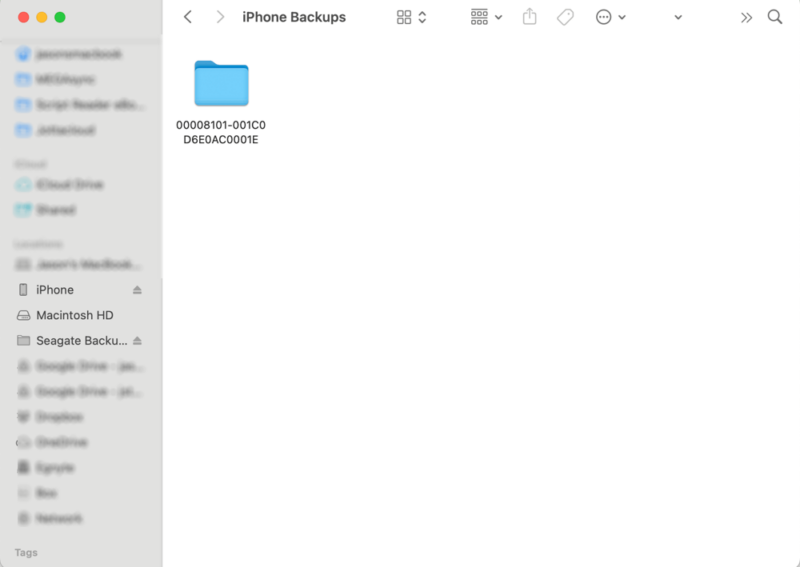
How to Back up an iPhone to an External Drive on Windows
You don’t need a Mac to back up your iPhone to a computer; you can do so using a PC. You’ll need to download iTunes first, as that app is required to perform a backup. Once downloaded, you can back up your iPhone.
- Open iTunes
Find iTunes in your applications. If this is your first time accessing the app, you’ll need to sign in with your Apple ID. You’ll also have the option to include iCloud, but it is not required.
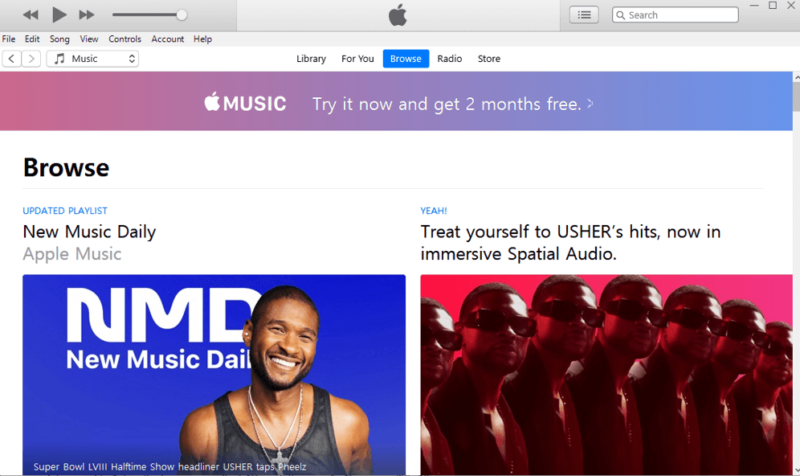
- Connect iPhone
Depending on your iPhone, connect it using a USB. Grant your PC permission if asked. In iTunes, you’ll see an iPhone icon in the menu bar. Click on it.
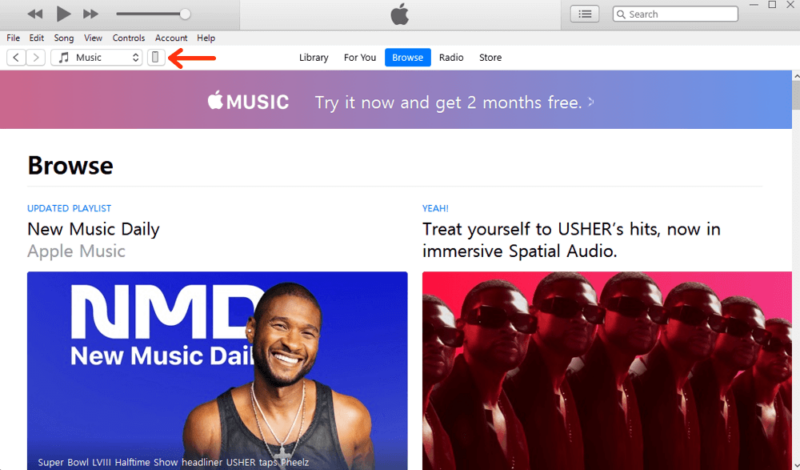
- Backup iPhone
In the “backups” section, click “back up now” to back up your iPhone. You can choose “this computer” or “iCloud.” Encrypting your data is also an option.

- Folder Backup Location
Locate your backup by starting in “file explorer.” Select “show hidden items” from the “view” dropdown or the menu to see AppData. Follow this path: Windows (C:)\Users\[Your Profile Folder]\AppData\Roaming\Apple Computer\MobileSync\Backup.
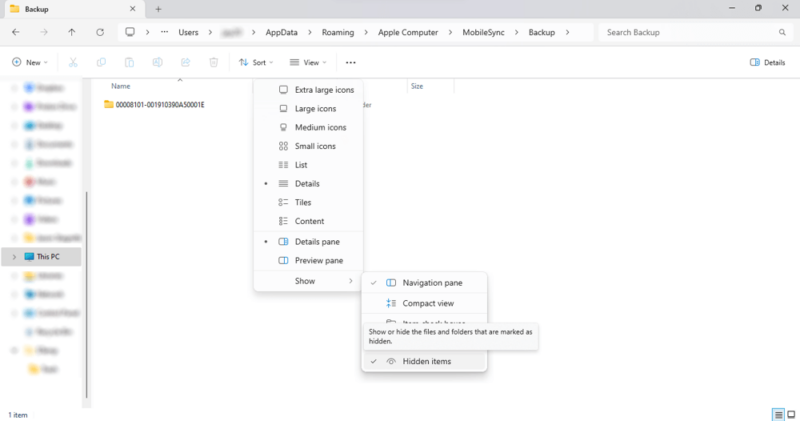
- Connect External Hard Drive
Plug in your external hard drive to your PC. You can find it in “this PC” under “devices and drives.” Open the external drive.
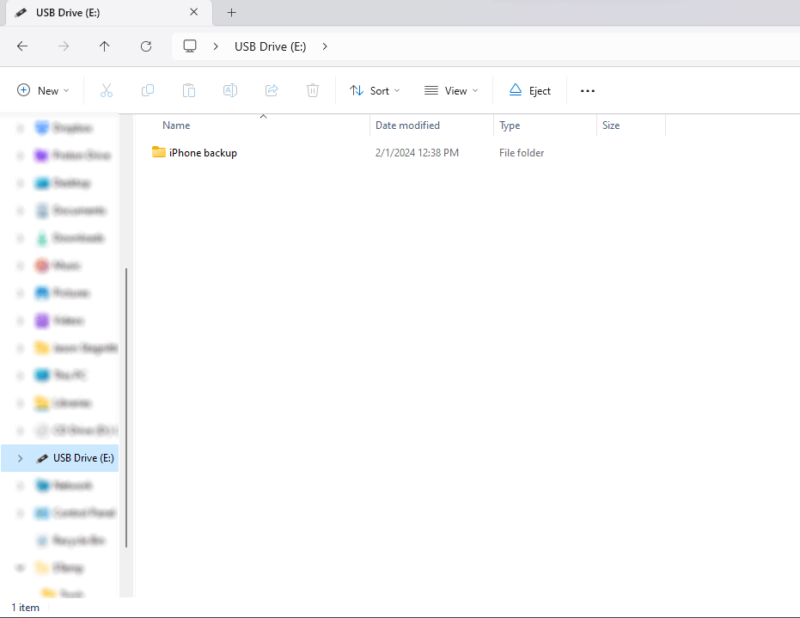
- Backup iPhone to External Drive
Make a copy of your backup from step four and paste it into the external drive.
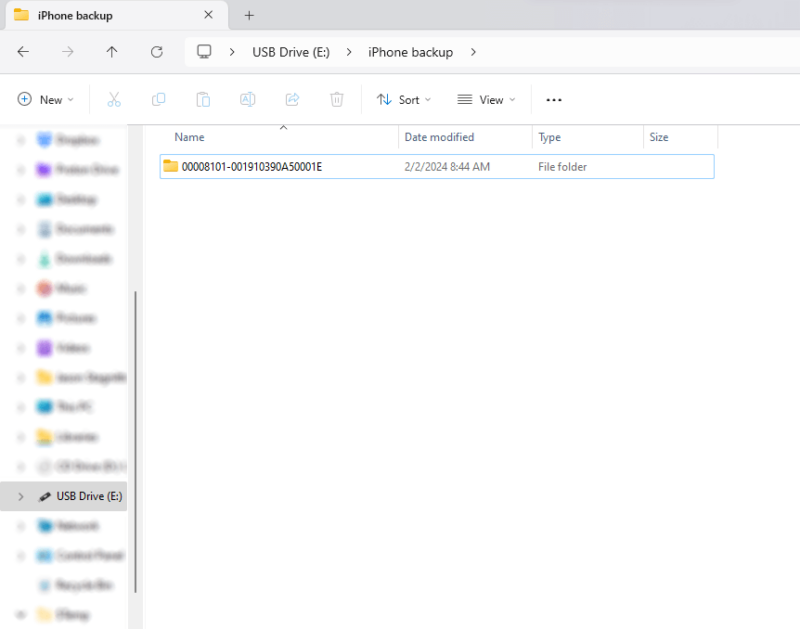
How to Back up Your iPhone Without a Computer
You have some options if you don’t have a computer or just don’t want to take up a lot of space with backups. You can connect directly to an external hard drive or use cloud backup to back up your iPhone data.
Use a USB-C Cable or Adapter
Depending on your iPhone and your external drive, you can directly connect the two together. The easiest way is to use a USB-C with an iPhone 15. Older models will likely need an adapter. It’s also important to note that the external device must have a single partition formatted for Apple devices and may require a separate power source.
Create an Automated Cloud Backup
Cloud backup services are another way to back up your iPhone without needing a computer. You can check our guide on the best online backup services to find one that suits your needs. You’ll need to create an account and ensure it has enough storage. You may need to download the accompanying mobile app to transfer data from your iPhone to your cloud backup account.
How to Check if Your iPhone Backup Worked
The easiest way to check that your backup worked is to locate it on your computer using the methods outlined in the previous sections. You will know the process worked if you see a folder in the respective backup folder.
Checking to make sure the backup worked is a good habit, as a failed or incomplete backup won’t protect your data. Another option, though not necessarily recommended, is to try and restore your data from a backup. If you click on the “restore backup” button and have the option to choose a backup, you’ll know the backup worked.
Where Is the Default iPhone Backup Location?
Apple stores the backup for your iPhone on your Mac at the following path: ~/Library/Application Support/MobileSync/Backup. Any backups you have will show up through this path. Storage space is the only limit to the number of iPhone backups that you can have.
How to See Your Old iPhone Backups
It is easy to see the older iPhone backups that are saved on your computer. You can check for older backups on a Mac or a PC.
- Open Finder
Open Finder on your Mac. From the menu bar, select “go” and then choose “go to folder.”
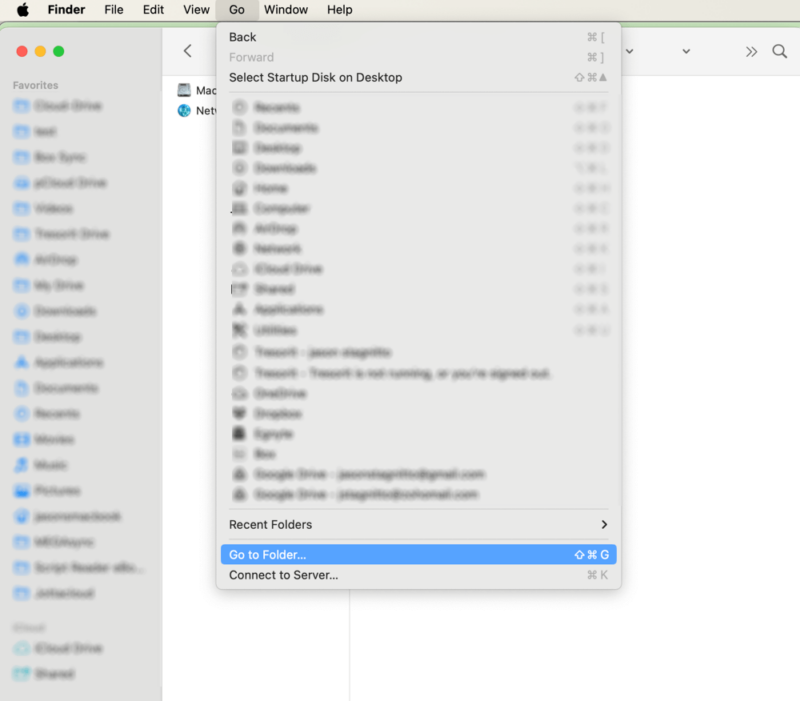
- Go to Path
In the window that pops up, enter “~/Library/Application Support/MobileSync/Backup/” and then double-click on the path. This will take you to the folder populated by all of your iPhone backups stored on your Mac.
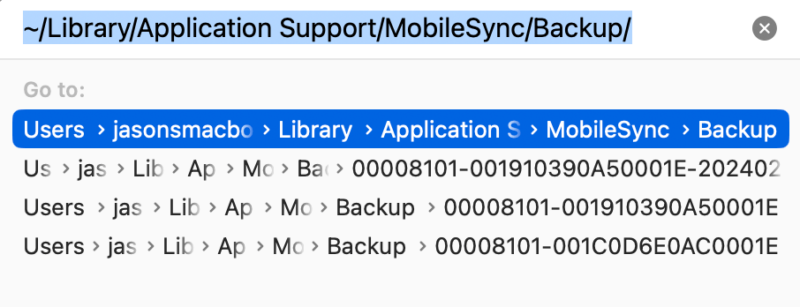
- Using File Explorer
On a PC, open File Explorer and go to the following path: (C:)\Users\[Your Profile]\AppData\Roaming\Apple Computer\MobileSync\Backup. You should see all the iPhone backups stored on your PC.

How to Change Your iPhone Backup Location on Mac Using a Symlink
If you want to change the default backup location on a Mac, you will need to use the Terminal application. This process is for more advanced users and, if done incorrectly, could create problems with your Mac. In most cases, leaving your backup in the default location is best.
- Open Terminal
Locate the Terminal app in your applications folder. You can also press the “command” key and the space bar and type in “Terminal.”
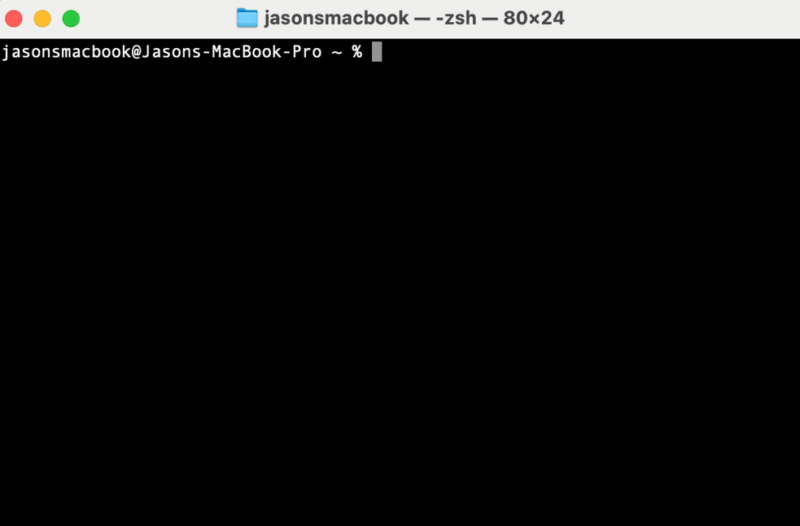
- Go to the iPhone Backup Location
To gain disk access in Terminal, enter “cd ~/Library/Application/Support/MobileSync.” Type in “open” to see the backup folder in Finder. Change the name of the folder — for example, to “backup-old.”
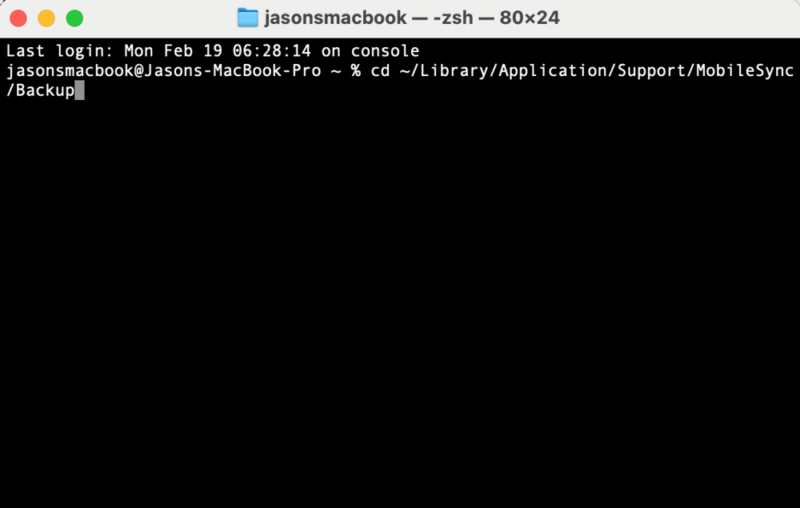
- Set up the Symlink
In Terminal, enter the command below. Replace “[external drive name]” with the name of your external drive: ln -s “/Volumes/[external drive name]/” ~/Library/Application/Support/MobileSync/Backup/Backup-old
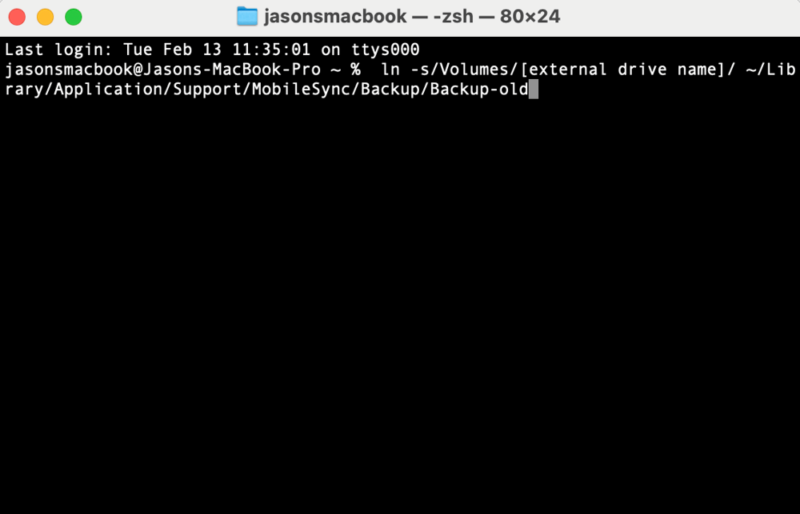
- Restart Mac
Restart your Mac. Any new backups for your iPhone will now be saved in the new location, which is your external hard drive.

Final Thoughts
Using an external hard drive to back up your iPhone is an older option that was popular a few years back. It is still a viable choice, especially if you don’t want to store your data on a business’s servers. Saving your backup to an external hard drive only takes a few steps and can be done on a Mac or a PC.
What do you use to back up your iPhone? Have you ever used an external hard drive? Would you consider using an external hard drive over other backup options? Let us know in the comments section below. Thanks for reading our article.
FAQ: Back Up iPhone
In most situations, you’ll need to locate the backup folder for your iPhone on your Mac or PC, make a copy and paste it into your external hard drive.
On a Mac, you can use the Finder app to back up your iPhone. For a PC, you need to download iTunes to back up your iPhone.
An iPhone 15 can connect directly to a newer external hard drive using a USB-C cord. Older iPhone and external hard drive models may require an adapter.
You can back up your iPhone to a flash drive by following the same steps to locate, copy and paste your backup data.


